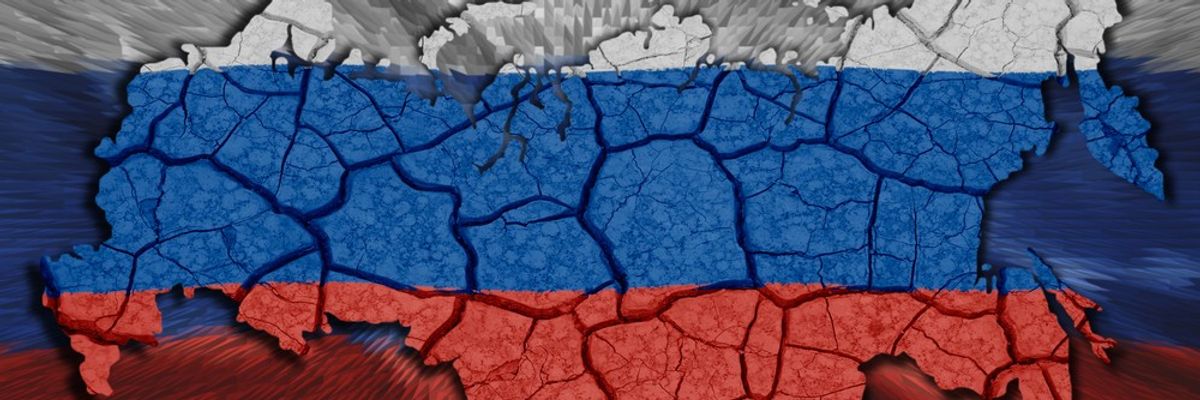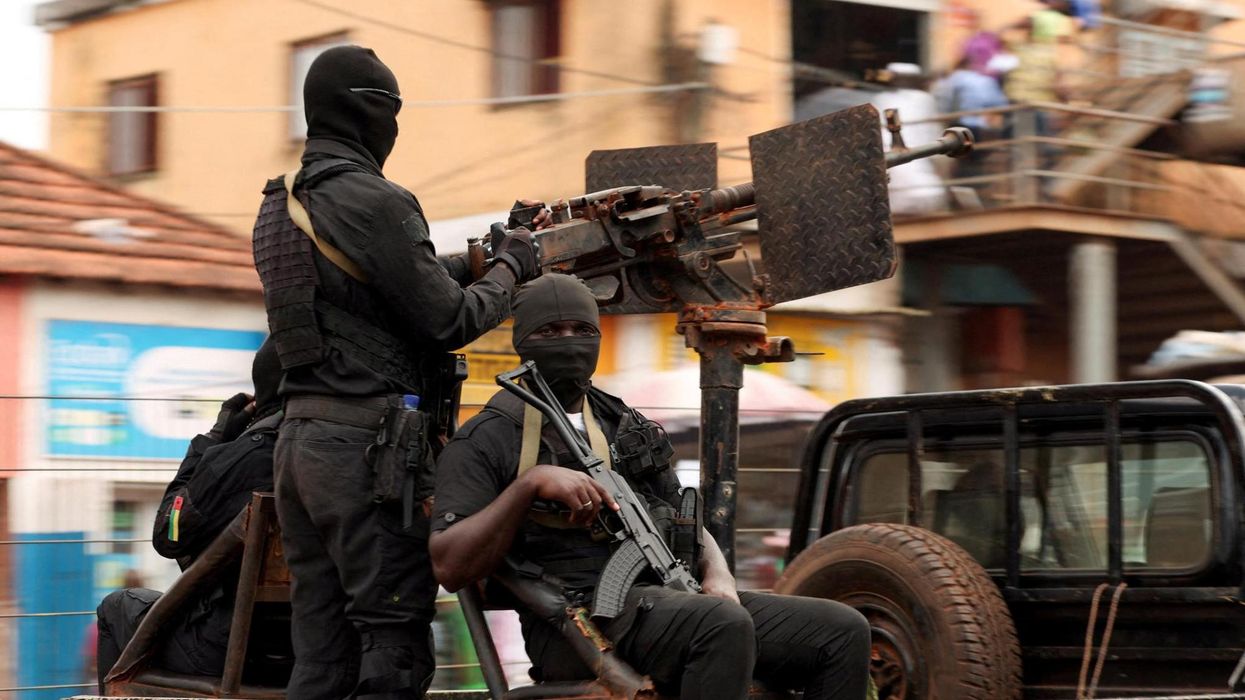There is a small but growing lobby in Europe and the United States making the case for the break-up of the Russian Federation. Their main argument is that Putin’s denial of Ukraine’s right to exist proves that the Russian state is irredeemable imperialist, and that none of its neighbors can feel safe living alongside such a revisionist and expansionist state.
Advocates of this position also draw the analogy with the collapse of the Soviet Union. The Soviet Union seemed to be a permanent feature of the international landscape, but it abruptly collapsed like a house of cards in 1991. They argue the same thing could happen to the Russian Federation, which occupies 60 percent of the territory of the Soviet Union and rules over 190 ethnic groups inside 21 republics in the federation.
Such arguments were advanced at a meeting in Brussels convened by the European Conservatives and Reform group, the conservative bloc in the European Parliament, on January 31. They called for the creation of 34 new states on the territory of the Russian Federation. In Washington, DC the Hudson Institute and Jamestown Foundation met to discuss “Preparing for the dissolution of the Russian Federation” on February 14; while a “Free Peoples of Russia Forum” convened in Sweden in December 2022. The case was laid out by Janusz Bugajski in his book “Failed State: A Guide to Russia’s Rupture.”
They have some supporters in Ukraine. On October 18, 2022, Ukraine’s Parliament declared the Chechen Republic of Ichkeria “temporarily occupied by the Russian Federation.” In February, novelist Oksana Zabuzko published an op-ed in the New York Times calling for the break-up of Russia.
This maximalist approach to the Russia problem is unrealistic and unhelpful. Yes, an ideal world would be populated by hundreds of little Switzerlands living at peace with their neighbors. But the real world includes many large, powerful states that use military force to defend their interests. There are over 6,000 distinct nations on the planet, but only 193 sovereign states in the United Nations.
There is minimal chance of the Russian Federation breaking up in the foreseeable future. While Russians accounted for only 51 percent of the Soviet population, they make up over 80 percent of the Russian Federation’s inhabitants. Sovereignty is not a credible option for any of the non-Russian peoples who live in Russia’s vast territory. The Chechen wars showed the lengths which Moscow was willing to go to resist secessionism. No one — including the Chechens themselves — want to repeat that experience.
In only six of the 21 ethnically designated republics does the titular nationality make up a majority of the local population. According to the 2021 census, only five nations have more than 1 million adherents (Tatars, Chechens, Bashkirs, Chuvash, and Avars). The Tatar, Bashkir, and Chuvash republics are located in the middle Volga region and are completely surrounded by Russian territory.
If the Russian Federation was to fragment, it would trigger a wave of local civil wars and ethnic cleansing — a grim prospect made even more alarming by the presence of thousands of nuclear weapons on Russian territory. For these reasons, the break-up of the Russian Federation would not serve U.S. national interests.
Another problem with the “Russia must go” approach is that it will antagonize Russian political elites and make it even less likely that a post-Putin ruler will emerge who can reach a reasonable modus vivendi with Russia’s neighbors. Non-Russian nationalists criticize Russian opposition leaders such as Aleksei Navalny or Mikhail Khodorkovsky for failing to confront Russia’s imperial nature, and for believing that the North Caucasus region belongs in the Russian Federation.
Indeed, Khodorkovsky is adamant that it is “irresponsible to wish for the collapse of the Russian Federation” and insists that “the Putin regime is leading to the destruction of Russia.” He continued, “A broken up Russia could cause more problems that the current version.” Writing in Politico he argued that if disintegration did occur, “a new need will arise for the forced unification of Russia’s main territory, and this will be accomplished by the next Russian dictator. It will set in motion a new totalitarian cycle in Russia.”
There were some dissenting voices at the Hudson Institute symposium in February. For example, Natalia Arno, the president of the Free Russia Foundation (and herself an ethnic Buryat) said, “We want to fix Russia, not to dissolve it,” adding that “There is no demand for dissolution on the ground level, aside from emigrants.”
These issues came up in the 1950s, during Cold War 1.0. In 1959 Congress established the National Captive Nations Committee to promote the liberation of the nations living under Soviet rule. The next year, 16 distinguished historians published a letter in Russian Review complaining about the law’s treatment of the Soviet Union as synonymous with Russia, and arguing that the liberation of the Russian nation should also be a priority. And sure enough, what brought about the collapse of the Soviet Union in 1991 was the defection of the Russian Federation under the leadership of Boris Yeltsin.
Another drawback of the “Russia must go” approach is that it amplifies one of Putin’s main propaganda claims — that the West is out to destroy Russia, and that the war in Ukraine is therefore one of self-defense. Putin said in September 2022 that Western leaders “say openly now that in 1991 they managed to split up the Soviet Union and now is the time to do the same to Russia, which must be divided into numerous regions that would be at deadly feud with each other.” On February 26, he said that the West wants to break Russia into pieces. Nail Mukhitov, a Security Council adviser and former FSB general, said, “The West’s main goal is the destruction of Russia,” and in support quoted Zbigniew Brzezinski’s 1997 book “Grand Chessboard.”
This theme resonates with the Russian public. Denis Volkov of the Levada Center argues that, “The idea that NATO wants to ruin Russia or at least weaken … it has been сommonplace for three-fourths (of poll respondents) for many years.”
Marginalized and in exile, one can understand why the leaders of ethno-nationalist movements such as the Erzya or Idel-Ural would try to hitch their cause to the Ukrainian wagon. It is an opportunity for them to get attention and possibly support from Western powers.
Indeed, Putin should be condemned for his repression of the nationalist opposition inside Russia, and the mounting restrictions on the right to education in the native languages of the ethnic republics. But that does not mean that we should put any political capital into promoting a fantasy future where Russia does not exist.
















